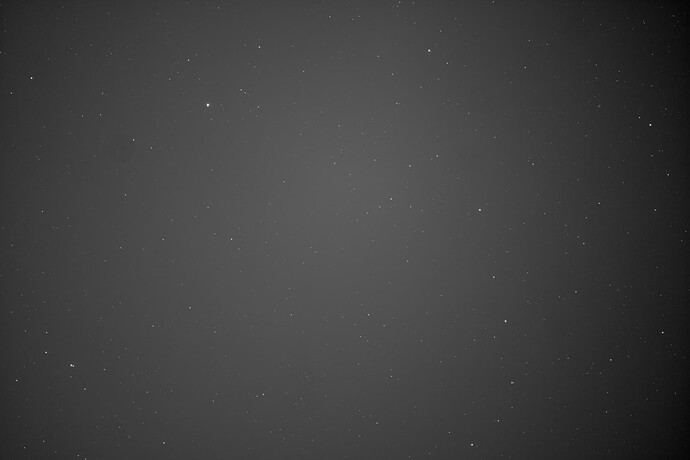Not had a lot of oppotunity to get out and test my new WD-20…the one night I did get out, the guiding was not very good. (Never less than 1 but reaching 3 at times. I have used the settings I used on my AM5 But did not get the results I expected, especially looking at the guiding figures posted on the Discord site. how do you go about uploading the PHD2 logs to either this site, the discord or the support page on the WarpAstron web site.
Any imput would be appreciated
So here are my steps.
1/ 3 point polar alignment in NINA
2/ In PHD2 check mark the box titled “Reverse DEC output after meridian flip” (Even if you don’t do a flip just check it for when your scope points west.
3/ I use PPEC for RA and Hysteresis for DEC. I set DEC aggressiveness to 100.
4/ Calibrate PHD2 via slewing to the meridian.
Your PHD2 logs are typically located : ~/Documents/PHD2 where the tilde means your home directory.
Hope this helps. I was frustrated with it until I figured out the above steps. The DEC check box is key.
Make a profile in PHD2 for your mount and scope combo so you don’t have to check uncheck the box every time you change mounts.
Interesting - after accurately polar aligning, I did an experiment; using a guide rate of 1x, with PPEC and Hysteresis. I found the DEC RMS was worse than the RA. I disabled the DEC guide output and the DEC RMS improved dramatically. If you don’t have drift, and you are using rapid guiding, DEC guiding should not need to thrash about reacting to seeing conditions?
My guide rate is 0.5 with a 1s exposure. Not sure if this is too much thrashing.
… yes, but only disable the DEC, not the RA guiding
I’m out of commission right now, but when I’m up and running again, I’ll post some tracks. For consistency, I do all my assessments at DEC=0, otherwise the seeing conditions affect the apparent RA performance, on account that RA is scaled back/pixel with increasing DEC, but seeing is not.
I’m up and running. I experimented with PPEC algorithm and plain Hysteresis in PHD2. Not a huge difference. I’m experimenting with guide rates of 0.5x and 1x with 0.3 - 1 second exposures, with about 70% aggression.
Looking at the traces, 1 second exposures introduced too much lag when the PE was rapidly changing. Definitely 0.5 or 0.3 seconds seem better. (Even though my guide camera is USB3, multistar guiding takes a while to compute, so I was only getting commands every second with 0.3 second exposures, so I went back to single star subframe measurements.)
The RMS figure is misleading with very rapid guiding, as it mostly detects seeing. The true outcome is the image. This was taken at low DEC where PE has the most visual impact, for both algorithms. Tak85 and QHY268 camera. These images have simply been screen stretched in PI, no deconvolution.
I have done some further refinements and am having a discussion on the PHD2 forum. These seem promising starting points:
1.x guide rate, 0.3 or 0.5 second exposures, PPEC, with 70% prediction and aggression settings, ~360 second period. DEC … I’m trying something novel… Z-filter, with 15x factor. The DEC trace will look awful - but the real truth is in the issued corrections, in my case very few, which means the mount has low drift rate in DEC and it only needs the occasional nudge.
I would have preferred a 0.75x guide rate, but it is not available at present. The guide log is attached (best to view it in PHD2LogViewer utility.):
PHD2_GuideLog_2024-11-20_171210.txt (303.8 KB)
Your RMS in those logs still seem a bit high… But you did say starting points…
With very short exposures the RMS is more an indicator of seeing conditions. The seeing was not great and I was at low altitude. If I applied the same parameters and pointed at the zenith, the RMS would appear much better.
I am looking at the randomness of the corrections on DEC. With good PA, it should not require much guiding…. and zfilter does just that. On RA, it is more difficult to judge, but the lag behind the steep parts of the PE curve are just detectable, suggesting I cannot use longer intervals. I’m getting a faster guide camera and will see if it makes a difference.
The proof of the pudding however… I’m 30 hours in to an image target. Will share the results when it is done.
How did the image turn out?
JMD
Not there yet- I want 50 hours minimum and the weather turned.
Welllll… Not much to complain about here that I can see! That is a Beautiful image Chris!
You are getting me excited about putting this thing into GEM mode to see what I can do at a dark site! Do most of my imaging with my big mount on a pier in my light polluted back yard. DSO imaging at dark sites was number 3 on my list of goals with this mount.
jmd
What camera are you getting? Are you doing OAG?
That was with a QHY268 on a Tak85. I also have a WO GT102 with a QHY600, which has exactly the same FOV. I’m trying to pair them up together but need a bunch of 59mm filters first



